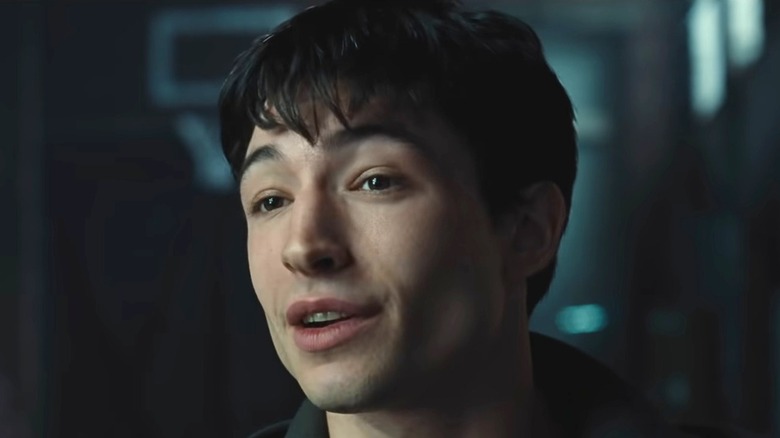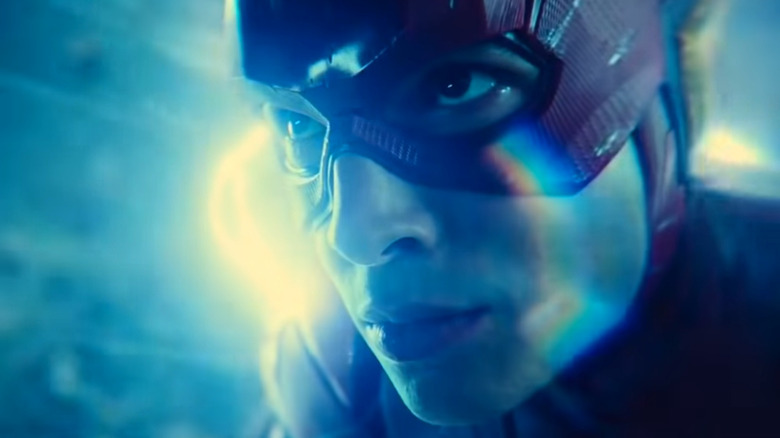How Fast Is Ezra Miller's Flash According To Science?
It won't blow anyone's mind to state that the Flash is fast. He's fast enough to break the light barrier, travel through time, phase through objects, and create tornadoes by windmilling his arms. He can beat Superman in a race without breaking a sweat and zip into other realities with the same ease as you might commute to work. All of these feats have been accomplished by one version or another of Barry Allen, from comic books to cartoons and even live action.
We've seen several versions of the Flash in recent years, and in live action, he's most famously portrayed by Grant Gustin in the CW show "The Flash" and by Ezra Miller in the DC Extended Universe. Miller also dropped by "Peacemaker" for a Flash cameo and may return soon in a movie based on the "Flashpoint" comic, assuming the actor doesn't cause any more trouble in paradise.
Miller's version of the Flash hasn't yet demonstrated all of the Speed Force's most awesome powers, but he's still proven himself as overpowered as any other version of the character. In "Zack Snyder's Justice League," he dodges Batarangs, saves Iris West (Kiersey Clemons) from a car accident, and runs fast enough to reverse time. But just how fast is he according to science? Can his speed be measured? As it turns out, the answer is yes.
A second for us would be over a minute for the Flash
Using the scene in 2017's "Justice League" where Batman (Ben Affleck) recruits the Flash, The Science Of determined how quickly Ezra Miller's version of the speedster can move. In that scene, which contains a special Easter egg for DC fans, Bruce Wayne throws a Batarang at Barry Allen's head, forcing him to dodge it with his superspeed and proving he's the Flash. By comparing a rough estimate of how quickly the Batarang moves to Barry's speed moving out of the way, the article's author concluded that Barry moves 62 times faster than normal.
The number was arrived at by estimating the distance between Bruce and Barry when the Batarang is thrown. The Batarang's rate of movement was then calculated based on the top speed of a knife thrown by a professional knife thrower. To put the Flash's reaction speed into perspective, the human eye can process rates of up to 60 Hertz, or "frames per second" (via Healthline).
That means he'd get bored playing even the highest-quality video game running at 120 Hz since he'd only be seeing 2 frames in each one of his superspeed seconds. Watching "Justice League" himself? Forget about it. During its 120-minute running time, he'd be sitting in the theater for 124 hours.
However, it's not clear that Barry always moves 62 times faster than normal. It's simply the speed he moves at in this particular scene. It's likely that he's going a lot faster than that in several scenes throughout the movie, especially when he uses his speed to generate an electrical current to revive Superman (Henry Cavil) and at the film's climax when he enters the Speed Force during the final battle with Steppenwolf (Ciarán Hinds).

